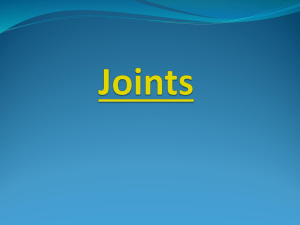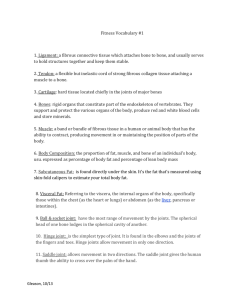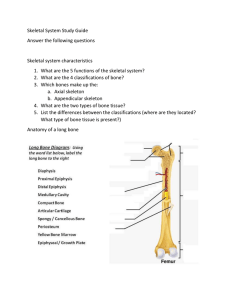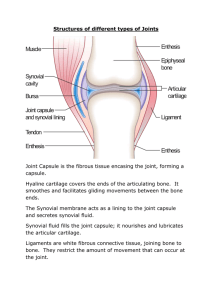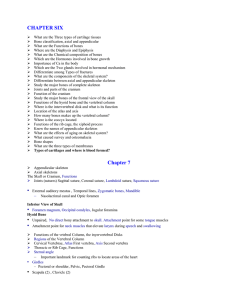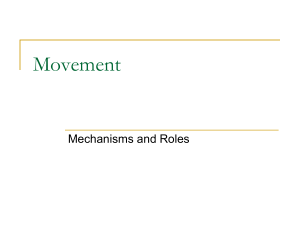Fitness PP 2015
advertisement
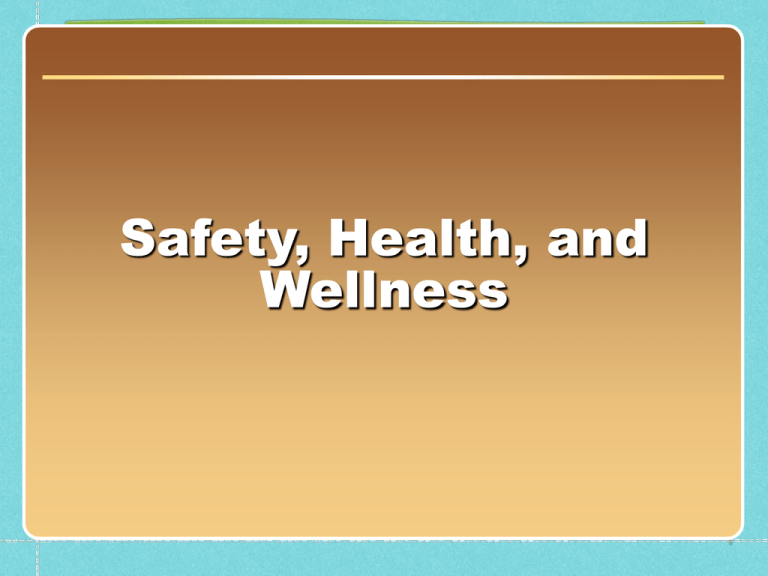
Safety, Health, and Wellness Chapter ?? Basic Anatomy The skeleton is the framework for the body. It includes 206 bones of various sizes and types. Muscular System (continued) Skeletal and Muscular System Midline: the median line of the body; lines up with the nose, naval, pubic synthesis and heels Origin: the point at which a muscle begins; closest to the midline Insertion: the point at which a muscle ends; farthest from the midline Action: the function or the performance of a function of the body or one of its parts Joint: the point of contact between elements of a skeleton whether movable or rigidly fixed together with the surrounding and supporting parts (as membranes, tendons, or ligaments) Joints Joint types identify how joints move, their strengths, and their limitations. •Ball-and-socket joints: an articulation (as the hip joint) in which the rounded head of one bone fits into a cuplike cavity of the other and admits movement in any direction •Examples- hip and shoulder joints •Hinge joints: formed between two or more bones where the bones can only move along one axis to flex or extend •Examples- elbow, finger, knee, and toe joints Connective Tissue Two types of tissue connect bones and muscles: ligament and tendon. A ligament is a strong band of tissue that connects bone to bone. A tendon is a strong band of tissue that connects muscle to the bone. (continued) Connective Tissue (continued) Dance Fitness • Strength is the amount of force a muscle can produce. You need strength to dance. • Flexibility is the ability to extend • Endurance is the ability to sustain a prolonged stressful effort or activity Alignment Achieving good vertical alignment requires correctly positioning the parts of the body. Alignment: placement of body parts Physical Preparation RICE: Rest, Ice, Compression, Elevation; used in treatment of injuries Strain: to injure by overuse, misuse, or excessive pressure Sprain: a sudden or violent twist or wrench of a joint causing the stretching or tearing of ligaments Injury: hurt, damage, or loss sustained




